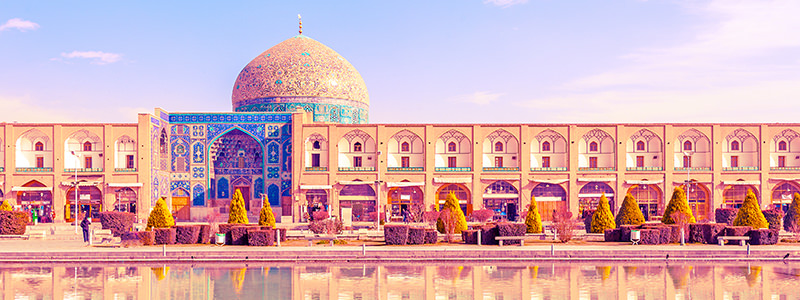Officially, alcohol isn’t legal in modern day Iran. But thousands of years ago Shiraz flourished as a foremost fine wine-producing area.
Shiraz is known as the city of poets, wine, literature, and flowers. We know – it sounds a bit like Brooklyn. The details behind the invention of Persian wine from this region are dubious, but one fun legend is the story of a girl who was totally heartbroken after the king rejected her. Hey – we’ve all been there. In a moment of melodrama, she decided to kill herself by eating rotten grapes. Little did she know, she was actually consuming fermented grapes – i.e. wine. She woke up severely hungover, then told the king all about it. He gave the girl major props for her discovery, but it’s unclear as to whether or not he actually decided to date her afterward.

Unfortunately, this story is as awesome as it is apocryphal, and no one really knows how Shirazi wine got started. But the truth is, given how well-suited the Shirazi region was for winemaking, popping bottles was inevitable. As perplexing as the idea of Iranian wine might sound today, the ancient city of Shiraz was perfectly primed for growing grapes. At 1,600 meters, the altitude was ideal for vineyard conditions. The mouthwatering Shirazi wine produced was white, available in both dry and sweet varieties.
This is a great time to mention that Shirazi wine has nothing to do with the Shiraz grape. Unlike the white Shirazi wine, the Shiraz, or Syrah grape makes some of the darkest wine around. If that isn’t enough evidence for you, a university study confirmed that Shiraz/Syrah has French – not Persian – ancestry. Syrah confusion aside, we know traditional Shirazi wine was good, because it got a British seal of approval. Even though Persian wine was already renowned by the 9th century, seven centuries later the Brits were recommending it left and right.
Post-Iranian revolution rules forbids wine consumption, yet Shirazi grapes are still enjoyed both fresh and as raisins. This is interesting when you consider that wine grapes aren’t typically meant for raw consumption. These grapes sound intriguing, and we’d love to get our hands on a bunch for some fermentation experimentation.
In the meantime, we can celebrate the wines of Iran through pictures, stories, and of course, by symbolically getting intoxicated on Purim.

